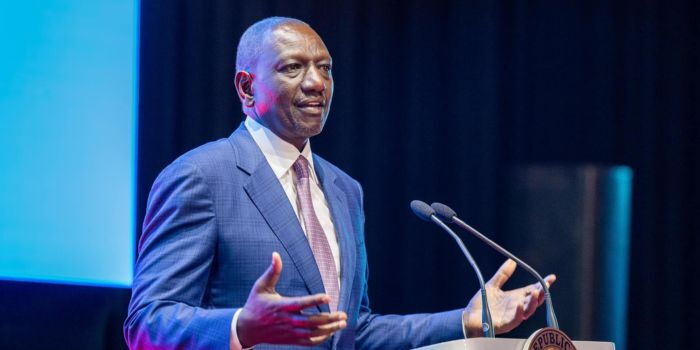President William Ruto will continue to witness holes in his budget as high interest rates hit Kenya’s borrowing appetite. This comes as a report from the World Bank notes that Kenya’s external total debt stock stands at Ksh5.60 trillion, this half of the public debt stock.
According to the International Debt Report 2024 by the World Bank, Kenya has the fourth highest interest payments as a share of export earnings. Kenya’s interest payments have been pegged at 12.8 percent, behind Mozambique’s 38.3 percent, followed by Senegal’s 25.9 percent and Pakistan’s 13.6 percent.
“For IDA-eligible countries, interest payments as a share of export earnings, a measure of the repayment capacity of a country, significantly increased by 1.6 percentage points in 2023 to 5.8 percent, equivalent to an increase last recorded in 2005,” the report notes.
This means that interest payments on external debt consumed an increasingly large share of Kenya’s export earnings. According to our analysis, Kenya spent about Ksh115 billion of the Ksh906 billion the country earned from exports in 2023 according to data from Statista.
President William Ruto with World Bank President Ajay Banga on the sidelines of G20 Compact with Africa Conference in Berlin Germany.
Photo
PSC
To put this figure in context, the money used to service the debt is double what the government allocated to improving agriculture to boost farmers’ productivity. It is also nearly 60 percent of the infrastructure budget in the 2024/2025 budget, set at Ksh200 billion.
The report notes that Kenya’s total external debt stock stands at Ksh5.60 trillion. A large share of this debt is held in long-term external debt stocks standing at Ksh4.743 trillion. This debt is held in public and publicly guaranteed debt from official creditors, multilateral (55 per cent of the debt), which includes the World Bank (30 per cent), bilateral (23 per cent), private creditors, bondholders, commercial banks, and others.
The others lending to the government are private, nonguaranteed debt from bondholders, commercial banks, and others. Already, Kenya’s debt service charges on external debt more than doubled from Ksh403 billion to Ksh839 billion in 2023.
According to the report, commercial loans accounted for the largest share of interest payments at Ksh102.76 billion, followed by China (Ksh52.2 billion), IDA (Ksh22.29 billion), ADB (Ksh13.99), and IMF (Ksh11 billion).
The rising interests are not the only concern for Ruto. According to the report, most of the loans have a grace period of less than 10 years. In essence, Ruto has to find a way to pay back most of the loans while pushing his development agenda over the next three years and beyond if he remains in power.
According to the debt report, such high ratios of interest payments as a share of export earnings have ramifications as they weaken the fiscal positions of these countries.
The increase provides President Ruto and Treasury CS John Mbadi with a fresh headache, as such costs translate to shifting scarce resources away from providing critical needs such as education and health, among others, to cater for debt servicing.
The government has already tightened the noose on spending in the government and increased taxes as part of an effort to find extra resources to run the government.
Treasury CS John Mbadi during a consultative discussion with representatives from the National Gender and Equality Commission on December 5, 2024.
National Treasury


